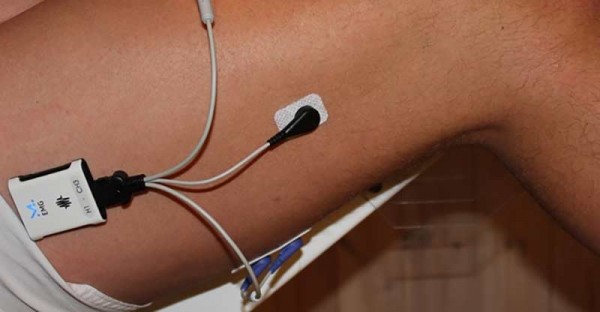[EMG] sEMG system
본문
The Collection Requirements of EMG Recording and Analysis
You can use skin electrodes to evaluate superficial muscle groups—usually those that contribute to propulsion—while deeper muscles require fine wire methods. The muscle’s location and the type of movement being recorded are primary factors in deciding what type of electrode to use. When testing muscle, EMG uses a comparison of the exercise to an isometric action known to be standardized and relevant to the movement pattern. Isometric comparisons are commonly used to create both a baseline of change, and an estimation of activity.” Besides isometric muscle testing, it also includes other factors that dictate successful recording.
In addition to getting ready with regards to isometric testing and skin preparation (shaving and cleaning), knowing how to clean up the signal and create meaningful summaries of the action requires experience in both the science of electromyography and the system’s software. Analysis is about using the context outside of the data to bring clarity to the signal, as the software usually does most of the heavy data processing. The extra time after the data collection isn’t especially long, but it does require work by someone doing both reporting and decision-making to make the information usable.
Types of EMG Systems and Options
While the market used to be only a research option for companies, two options generally exist now with EMG. Today, users can have garment-based systems or they can have full wireless sensors with compete software packages.
Garment solutions are very limited, and tend to collect general “areas” versus targeted muscle groups. For example, the hamstring is not a muscle—it’s a set of three individual muscles: the semimembranosus, semitendinosus, and biceps femoris. Garment-based EMG can provide general awareness and simple feedback, but for specific muscle groups and even regions within the muscle group, you will need research-grade instrumentation. Nearly every system is wireless, meaning the signals from the electrodes or fine wire get sent directly from the muscle to the computer, but many companies still use a boosting device to relay the data from the athlete to the computer. Real-time EMG is a feature of many systems, as the need to see live information is requested enough to warrant it.
There is currently a line of differentiation between research-grade and consumer-grade EMG, and if you need data that is acceptable in sport science studies, you should not use garment options. If you are looking for additional help with lower-level needs, the convenience of wearable systems that you can use over and over may be a good option for your environment. Electrode placement is still a timeless requirement, so there needs to be supervision of athletes if you use garment options, as well as somebody double-checking that the data is correctly assessing the muscle group. Data is not interchangeable between consumer- and research-grade products, but some areas like glutes are very easy to collect from and might provide more value.
EMG Hardware and Software Considerations
Three distinct hardware components are the backbone of EMG data collection: the electrodes, the signal relay, and the receiver. Electrodes are not complicated, as they are just conductive, adhesive material that captures an electrical signal. The signal relay transmits the muscle information and time data to a receiver, usually connected to a computer system. These three components together typically gather and record muscle activity with EMG, and software usually just visualizes the information.
Signal processing can sound confusing, but the complexity and demand of extracting valid data from the recording requires filtering. Raw data is easy to collect, and you can do it with very little expense or effort, but ensuring that the information is trustworthy requires an extra step. Professionals should know that filtering is just statistically cleaning data, so both analysis and valuation for biofeedback sessions can use it.
Software is used for additional analysis and for presenting the information in reports or similar documentation. Most of the included software packages specialize in EMG analysis, while some packages can also connect multiple data sets other than EMG for deeper understanding of the information and to explain patterns from motion capture and force analysis.On average, the companies tend to do a balanced job with providing both hardware and software, but most companies are much stronger with one or the other.
Leading Options in Electromyography Systems
The list here is not an exhaustive collection of companies and products, but it does illustrate that you can’t just decide on an EMG system after looking at a few brochures. Professionals need to know they will be investing thousands of dollars into one data set, and hundreds of hours into using it in an applied setting. Electromyography is a powerful tool and very useful for certain situations, but it’s not a toy or system to use for the entertainment of athletes or marketing of performance and rehabilitation systems. You should use EMG to increase the fidelity of data collected in a professional setting, not to fit a business narrative or sales agenda.
When to Buy and When to Outsource the Data
Investing in EMG isn’t for everyone, as several teams are underwater with data and responsibilities. Sometimes it makes sense to look to third parties, such as consultants and clinical groups, who can perform the testing and analysis for you. If you are going to buy, always invest in training like any other sport technology. Not everyone can collect data from EMG systems, but everyone can learn from the information they provide, either in research or from other experts in the field.
댓글목록 0
등록된 댓글이 없습니다.







